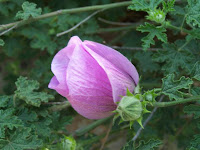Plenty of re-growth and now in flower
After bring pruned back at the end of last season my passion fruit has grown back really well this year and is beginning to flower. I am taking this as a good sign that it has come to no harm after my giving it a good prune. At the beginning of spring I fertilized it with dynamic lifter and some potash to give my plant a boost and now that it is flowering I will give it some liquid fertilizer every two weeks. Tonight I decided as this plant gets all the afternoon sun that I would mulch the garden bed to help the soil retain water over our hot summers days. I am hopeful of a good yield from my passion fruit plant this year.



















































